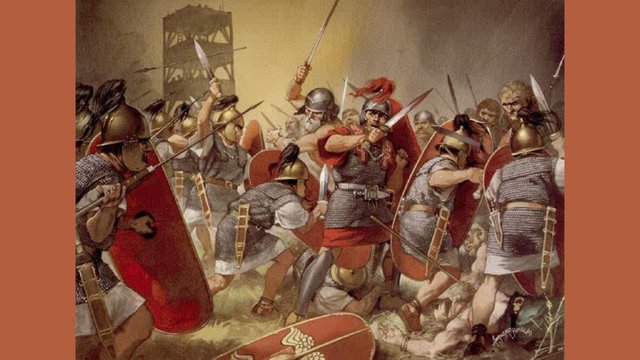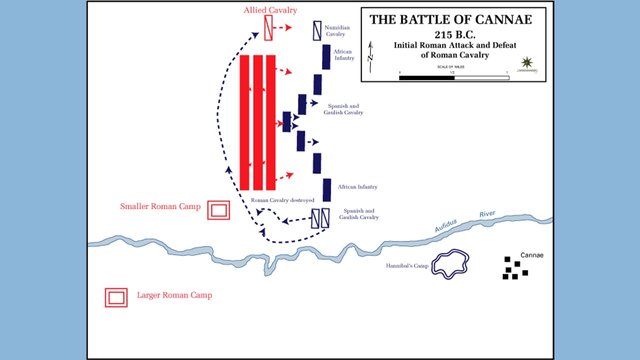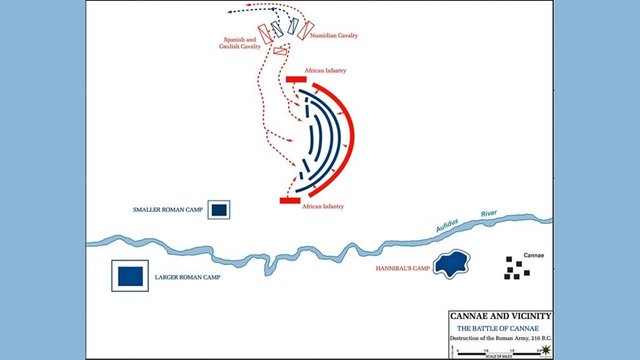What Does Decentralization Mean To Me


"In Decentralization We Trust"
Ah, "decentralization" ... the bottomless pit of inspiration for twitter rants by smarty-pants.
As Aristotle wrote 2,600 years ago, "Virtue is to be found between two extremes of Vice." This axiom can be applied to a myriad of matters in the Affairs of Man, and the matter of centralization vs decentralization is no different.
The Battle of Cannae
One of the most famous battles in all of human history was the Battle of Cannae. It took place during the Second Punic War on August 2, 216 BC, in what we now call southeastern Italy, and was a conflict between Hannibal, and his motley army of Carthaginians, Libyans, Numidians, Spaniards and Celts ... and the numerically superior Legions of the Roman Republic.
Prior to the battle, Hannibal had pillaged the Italian peninsula and had, utilizing a combination of strategy and cunning, destroyed every Roman Legion sent out to fight him. The Romans therefore had decided upon a strategy of logistical harassment. That is, their military forces would shadow Hannibal's army, close enough to interrupt his re-supplies, but distant enough to avoid combat. It was, essentially, a "mobile siege."
After a while, though, the situation became humiliating for the Romans. They were, after all, THE ROMANS ... and they were letting a foreign invader dominate their own back yard. And so, yet again, they determined to defeat Hannibal on the field of battle.
What has any of this to do with decentralization?
Historically, the Romans hated kings. That is, they were TERRIFIED of centralized power and tyrants. Hence, every year the Senate would elect two Consuls, for one-year terms, either of whom could veto the other. In times of war, one of these two Consuls would typically lead an army into battle. The Romans were not first to employ this bi-potentate approach as the Spartans had done something similar with their tradition of having two kings.
Of course, whichever Consul-General was responsible for a military victory against the likes of Hannibal would be lionized, if not deified. And so, there was a dispute about who would get the honor. After much haranguing, they decided not to decide and two Roman armies were created, although they would act as one.
As there was really only one army, but two Consul-Generals, Lucius Aemilius Paullus and Gaius Terentius Varro, there was a problem. Who would be the actual Commander-In-Chief? As was typical, the Romans came up with a "decentralized solution" ... they would alternate command. One day Paullus would command and then the next day, Varro. Back and forth.
This created a problem, however.
One of the generals, Varro, was an "offensive general" whose style was to take the fight to Hannibal, while the other, Paullus, was a "defensive general" who wanted to force Hannibal to attack him at a time and place of his choosing. And, of course, each wanted the eventual battle to occur on "his day" so longer-than-one-day strategies could not be employed. As a consequence, each day the Roman troops were redeployed into postures favoring the whims of whomever was in command.
Hannibal noticed.
He sent forces to provoke the Romans into hastily formed, and ill-prepared, formations on a day when he knew the aggressive Varro was in command. Varro took the bait and attacked, ignoring the fact that Hannibal's lines were organized in a very peculiar fashion. Instead of the horizontal straight line one would expect, Hannibal's lines were arrayed in a convex, outward-facing crescent.

This arrangement had been deliberate. Upon contact, Hannibal's center slowly began falling back in a controlled retreat. And, in the confusion of the battle, the Romans failed to realize that by pushing back Hannibal's center, his "convex crescent" was becoming a "concave pocket" ... a "double envelopment." The Romans were slowly being encircled.

Eventually the encirclement was complete, and the Romans became fish in a barrel. The ensuing slaughter was inarguably the most one-sided victory in military history.
Worse than a bad plan is no plan. Worse than no plan, is two.
The Romans learned their lesson and when they decided to move the theater of war to Carthage in North Africa, instead of continuing to duke it out on the Italian Peninsula, they "centralized" decision-making and gave Scipio Africanus sole command for the duration of the war.
"Dictators" were frequent features of the early Roman Republic, generally serving for no more than six months before their omnipotent powers reverted back to the Senate. And, at first it worked. The city of Cincinnati in the United States is named after one such dictator,
Lucius Quinctius Cincinnatus, who became a model of civic virtue. Later though, sketchier individuals like Sulla would abuse the extraordinary powers of the office to purge political rivals.
And, it set a precedent which would be exploited by Julius Caesar, who appointed himself "Dictator for Life," and the Emperors who followed. Henceforth, the Senate would become little more than a rubber-stamp for, all-too-frequently, megalomaniacal lunatics who declared themselves gods and their horses, Senators.
Virtue's in the Middle
The point of this reminiscing is to demonstrate the folly of both extremes. Sometimes centralization is the best solution, while at other times decentralization makes more sense. Most frequently, it's a combination of both. Context matters.
But human beings, with our desire for simple, silver-bullet solutions, cannot help but to polarize our predicaments ... despite Nature counseling the contrary.
We possess two eyes that provide a view of the world from two different perspectives (decentralized) which, once fused (centralized) by our brains, results in "depth perception" ... the conversion of two, 2-dimensional pictures into a single 3-dimensional one.
Indeed, our brains themselves are comprised of two different hemispheres (decentralized), each utilizing its own algorithms, which, once merged (centralized), combine the granular with the holistic. Such complementary dichotomies are seen throughout the natural world and seem an almost essential feature in the blueprints of life.
The world of cryptocurrencies is currently undergoing an ideological war concerning decentralization/centralization and the zealots on either side seem willing to risk a Cannae in order to get their way. This is foolishness upon its face. What we need to embrace is a combination of the two approaches depending upon the practical demands of the situation.
"Hybrid models" that combine the best of both are undoubtedly the trend of the future as theory gives way to reality and ideology to pragmaticism.
Quill
This article is part of @theycallmedan's "What Does Decentralization Mean To Me" challenge.

All images are linked to source, are QuillFire originals or are modifications of images in the public domain. Videos and images may also be parodies of original works, therefore relying upon applicable exemptions from copyright.


It's shameful to see that a post with such high quality only got 4$. I enjoyed every bit of it. Thank you for sharing your thoughts with us.
I also agree with your approach, it seems that we can't really be completely decentralized or completely centralized unless we are ready to pay the price. The solution lay into finding the right balance between the two extremities.
@quillfire
@dr-frankenstein,
I appreciate your gracious compliment. Alas, "creating quality content" does not seem to be a high priority to the higher-ups, a problem about which I've written volumes. Inevitably, this will come back to haunt them.
Quill
Not sure if you are a discord user, but there is a new movement to work on this here (on steem) after the last drama. Logicians such as you are highly welcome to share their ideas and suggestions to move toward something better.
https://discord.gg/u44V8Q
Thank you,
@dr-frankenstein,
Thanks mate. I joined the Discord Channel and will drop in once I catch up.
Quill